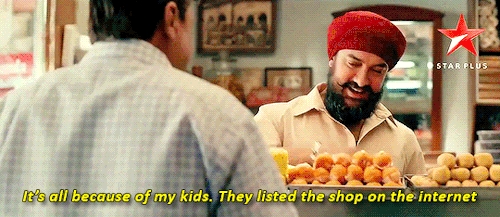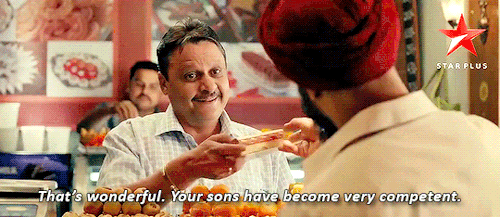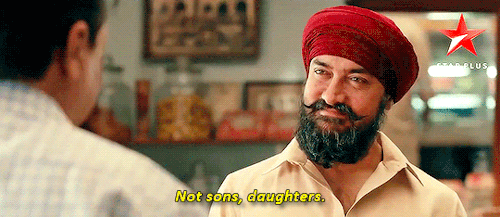All The Way From Virginia To Oregon! How Long Was That Trip? Overland Or Did You Take The Panama Route?
All the way from Virginia to Oregon! How long was that trip? Overland or did you take the Panama route?

Which went a little something like this:

^Richmond VA.

Then down to a Virginian port city.

Where he would travel by boat,

Down to Panama, where he would take the trans-Panamanian railway to the Pacific coast,

In a train that probably looked like this one^. Then back on a boat up to-

San Fransico. Where he stayed for a few weeks with a friend looking for a job.

And when he did, probably caught a steamer up the coast and upstream like this one^. To Kinnik, which looks kinda like this:



He’s ready for it to be over.
The overland route to Oregon was the more popular, but Alfred’s got a bit of money; so he can afford to go the less physically grueling southern passage. Can’t find a source, but it probably took at least/more than a month.
((all links are to related articles. (photos not mine)))
More Posts from Yourcrowsovereign and Others



RIP Wally West
November 11, 1994 - June 20, 2016













Red phone nonsense part 2
part 1 part 3
Bonus

Callout post for people who use the word ‘thot’
Folks, I need to warn you
I’ve been seeing a sudden surge of use of the word ‘thot’ and I’m concerned
We’ve recently seen at least one ancient Egyptian deity resurrected through meme magic
Thoth is a significantly more powerful member of the pantheon than Kek and the consequences of summoning him may be even more drastic than the rebirth of Kek (Brexit, Trump winning the election, a series of celebrity deaths)
The phrase ‘return the bones thot’ radiates an obvious mystical power and it may herald that Thoth will come to preside over 2017 as Kek has presided over 2016 - the bones possibly refer to the millions of mummified ibises buried in his honor at his main temple in Khmun, by reblogging that post you may be unknowingly beseeching this ancient and powerful being to repay the thousands of years of sacrifices humanity once offered him - what form that might take, we can only speculate
Although it’s possible that Thoth has been with us for a while - his name in Greek letters is Θώθ, which is clearly referenced in the ‘OwO what’s this?’ meme
As the inventor of both magic and science and keeper of all wisdom, Thoth assuredly does know what ‘this’ is, but I’m not sure we want to find out
I’m also concerned that Thoth’s wife Ma’at may be connected to the frequent seemingly compulsive and superfluous use of the word ‘mate’ or ‘m8′ in memes
Please be careful with your memes, they may hold hidden arcane power

Algebra
Masterposts
Advice and tools by @thegrangersapprentice
Tips and links by @stemnerd3
Resource masterpost by @etudiance
Logarithms by @allydsgn
Graph shapes by @codeorg
Resources
Algebra II Homework Help
Khan Academy
ProfRobBob
Math Worksheets Land Printables
MathDrills Worksheets
Algebra Calculator
Mathisfun
Purplemath
Mathway’s Algebra Calculator
Geometry & Trigonometry
Masterposts
Resource masterpost by @etudiance
Some tips by @sundayscholar
Advice if you suck at geometry by @ballpenned
Cool trig gif post
Pythagorean formula explained
Resources
Hippocampus
Khan Academy (and trig only)
Geometry Dictionary
MathForum Info on Proofs
Geometry4Everyone
Math Fortress
Brightstorm
ProfRobBob (and trig only!)
Precalculus
Masterposts
Resource masterpost by @etudiance
Final precalculus review by @studteaing
Precalculus review by @productivityjunction
Rules for transforming functions
Resources
Precalculus Tips
Handouts and Notes
UC Irvine Videos
Huge cheat sheet
Khan Academy
Trig identity hexagon
ProfRobBob
Precalc class on EdX
Cheat sheet for dummies
Calculus
Masterposts
How to study calculus by @sundayscholar
AB calculus resources by @intellectus (#spon oops)
Studying for college math (emphasis on calculus) by @hexaneandheels
AP calculus tips by @kingdomstudies
Guide to calculus BC by @scolasticus
Resources
How to Succeed in Calculus
Krista King (the b e s t)
Calc AB Study Guide
CliffsNotes Calculus
Paul’s Calculus Notes
WOWMath Worked Free Response
Mr. Calculus
Cool Calc Cheat Sheet
University of Houston Calc Guide
ProfRobBob
Statistics
Masterposts
How to Study Statistics by @study-well
Scanned stats notes by @mildstudies
AP by Michelle
Killer stats notes and pdfs by @communitystudy
Resources
1st Semester Study Guide
Formula Sheet
AP Stats Tutorial
CourseNotes
Another formula sheet
ProfRobBob
Online statistics calculator
CourseNotes
General
Great tips by @hexaneandheels
Process of studying math by @doitforthea
More study tips by @study-hack
Amazing math masterpost by @studybuzz
Tips for studying math by @studyign
This incredible resource blog: @themathblrs
Best of luck with your mathematics!! Hopefully seeing this post is a good sine for the future.
(You can see my other original content here or request a post here!)





When you’re reading Fanfiction and you read something that is so perfectly detailed and written you gotta look away from your phone like

Gotta just take a breather ykno
France: what if the person who named Walkie Talkies named everything?
America: pregnancy tests are Maybe Babies
Seychelles: socks are Feetie Heaties
Sealand: forks are Stabby Grabbies
Canada: defibrillators are Heartie Starties
Australia: nightmares are Dreamy Screamies
Hong Kong: stamps are Lickie Stickies
England: my children are disappointments
Could you draw some swissfra?
yess gladly!!! :D
since i love cardverse!swissfra so much, here’s some of that au :>







this is why basch never smiles
How to read a scientific article
Hey y’all! This post is aimed at people who are making the transition from textbook-based science classes to article-based science classes. Scientific journal articles are dense compared to textbooks and aren’t written with the intent to teach basic concepts but rather with the intent to expand scientific knowledge. It can often be very confusing to figure out what is going on. Here’s how I was taught to read them 10+ years ago and how I still approach them today.
(I) After reading the title, start for real with the Results section.
Why would you do this when you know the abstract will give you a basic overview of the study and the introduction will set the context? Because you want to be an active reader. You want to figure out what happened in this study in a way that makes sense to you rather than be able to parrot what the author’s say happened. This is the major difference between reading a textbook (where you need to regurgitate the information later) and reading an article (where you need to be able to intelligently discuss the content either in class or in writing).
Look at the tables and figures first. Can you tell what the independent variables were? What the dependent variables are? What might the relationship between them be? What trends or patterns do you see? Depending on your style, it may be a good idea to mark up your document with this information or jot some notes down somewhere else.
Now read the text part of the results. What parts of the figures are the authors choosing to highlight in the text? Are there any results buried in the text that you can’t connect to part of a figure?
Now pause and think. What is the most important result of the study? Highlight where this appears in the text and figures. Remember that important doesn’t necessarily mean statistically significant! A good p-value doesn’t signify real-world meaning; you need to make that connection yourself. Take a moment in this step to notice what results still don’t make sense to you– no need to panic or write questions down yet because you haven’t read the rest of the paper.
(II) Get the gist of the Methods.
Chances are your professor did not assign you this reading with the intent to make you replicate the study. You don’t have to understand every sentence (or even most sentences!) of the methods unless you’re an advanced graduate student. You do have to be able to explain in layman’s terms what the researchers did.
Particularly important questions to answer that can be found in the text include: What were the independent variables? What were the dependent variables? What variables were controlled for, either statistically or through researcher manipulation? What statistical methods were used to look for an association? In health research, we use the acronym PECOT to deconstruct method’s sections.
P = population– who was being studied?
E = exposure– what variable were the researchers trying to determine the impact of? This might be an intervention (ie., a smoking cessation video) or something outside researchers’ control (ie., at least 5 years of daily smoking).
C = comparison– who is the population of interest going to be compared to? This may be a formal control group (ie., smokers who were shown a video on handwashing) or something outside researchers’ control (ie., former smokers of a similar demographic background who haven’t had a cigarette in 5 years).
O = outcome– what were the researchers looking for? This is also known as the independent variable.
T = time– how long were participants/subjects tracked and when were measurements taken?
(III) Read the Introduction.
Now that you have a very good idea about the design and results of the study, you’ll be better able to understand the introduction of the study. The basic goal of an introduction in any scientific paper is to explain why the study happened. The background may give you some helpful context, or it may be redundant at this point. I typically don’t spend much time on the introduction except for the end where the study purpose/research question and hypotheses are usually written. Mark these in the text! You should already have a good idea of the study’s purpose from the methods and results. Here’s some questions you should answer internally or in your notes at this point:
Did the methods align with the purpose?
Did the results support the hypothesis?
What are the scientific implications of these results?
(IV) Read whatever is at the end of the article: Discussion, Conclusion, Reflection, Limitations, Research Implications etc.
It is very important that you save these sections for last because these sections are where researchers tell you what to think of the results. You need to be prepared to critically engage with their interpretation of the results by already having your own. That’s what the three questions above are about! Of course, the discussion was probably written by multiple advanced scientists and you are but a lowly student. That doesn’t mean you should accept their conclusions without seeing their logic. As you read the discussion, think about these questions:
Do the researchers think the results support the hypothesis?
How are the researchers interpreting the primary results? [Bonus: what other interpretations are there, and are they mentioned?]
What do the researchers think the scientific implications of these results are?
What limitations do the researchers acknowledge, and how could those limitations be impacting the results?
(V) Synthesize it.
Try to boil down everything in the paper to just a few sentences that an 8th grader could understand. Whether you think through it internally or write it down is up to you. I usually print out my readings and write my synthesis on the blank back page using the following sentences starters:
The researchers wanted to know whether…
They found that…
This means that…
Taking the time to write the synthesis and any lingering questions you have can be really helpful if, like me, you do reading far in advance of class and need a quick refresher to glance at before class starts. It can also be helpful for paper writing or exam studying later. Consider revising your synthesis after you participate in the class discussion or hear your professor’s take on the article in lecture. Don’t rely on the abstract– that’s someone else’s synthesis, not yours.
—
I hope this was helpful!! Don’t feel bad if this process is ridiculously time consuming. I have spent probably 3-4 hours on a 5-page study before. The goal of science writing is to be as concise as possible, which makes reading short articles more difficult than longer ones. I am a graduate student at a top American university, and I typically read 9-12 articles per week this deeply. If a professor assigns more than 4 research study articles per week for a regular course, make sure they explain what students are supposed to be getting out of each article so you can target your reading better. Chances are, you can skip some sections and focus on coming to class with clarifying questions rather than a firm understanding.
Happy reading!!
@phd-one-day
-
 mercedeshidalgo liked this · 1 year ago
mercedeshidalgo liked this · 1 year ago -
 cloudbustingss liked this · 3 years ago
cloudbustingss liked this · 3 years ago -
 flashflyingfish liked this · 5 years ago
flashflyingfish liked this · 5 years ago -
 lowbudgetanimemen reblogged this · 6 years ago
lowbudgetanimemen reblogged this · 6 years ago -
 starryujella liked this · 6 years ago
starryujella liked this · 6 years ago -
 hemlockalope liked this · 6 years ago
hemlockalope liked this · 6 years ago -
 coldpapernightmare liked this · 6 years ago
coldpapernightmare liked this · 6 years ago -
 aphpositivity-suggestions-blog liked this · 6 years ago
aphpositivity-suggestions-blog liked this · 6 years ago -
 pickle-mike liked this · 6 years ago
pickle-mike liked this · 6 years ago -
 fawngored liked this · 6 years ago
fawngored liked this · 6 years ago -
 dyingpheonix liked this · 6 years ago
dyingpheonix liked this · 6 years ago -
 my-names-kym-blog liked this · 6 years ago
my-names-kym-blog liked this · 6 years ago -
 ask-badlydrawnnyoitaly liked this · 6 years ago
ask-badlydrawnnyoitaly liked this · 6 years ago -
 angelslicereblogs liked this · 6 years ago
angelslicereblogs liked this · 6 years ago -
 chu-chu033 liked this · 6 years ago
chu-chu033 liked this · 6 years ago -
 madietty liked this · 6 years ago
madietty liked this · 6 years ago -
 ohmygodeverythingistaken liked this · 6 years ago
ohmygodeverythingistaken liked this · 6 years ago -
 lextex507 reblogged this · 6 years ago
lextex507 reblogged this · 6 years ago -
 lextex507 liked this · 6 years ago
lextex507 liked this · 6 years ago -
 wisepuma23 liked this · 6 years ago
wisepuma23 liked this · 6 years ago -
 daste liked this · 6 years ago
daste liked this · 6 years ago -
 yourcrowsovereign reblogged this · 6 years ago
yourcrowsovereign reblogged this · 6 years ago -
 yourcrowsovereign liked this · 6 years ago
yourcrowsovereign liked this · 6 years ago -
 emilyliao0717 reblogged this · 6 years ago
emilyliao0717 reblogged this · 6 years ago -
 emilyliao0717 liked this · 6 years ago
emilyliao0717 liked this · 6 years ago -
 christospurrobin liked this · 6 years ago
christospurrobin liked this · 6 years ago -
 aguadjamaica liked this · 6 years ago
aguadjamaica liked this · 6 years ago -
 unknown-halcy0n liked this · 6 years ago
unknown-halcy0n liked this · 6 years ago -
 oniongrass liked this · 6 years ago
oniongrass liked this · 6 years ago -
 ask-cohabitation-america liked this · 6 years ago
ask-cohabitation-america liked this · 6 years ago -
 avianaruby liked this · 6 years ago
avianaruby liked this · 6 years ago -
 askbountyhunterjones liked this · 6 years ago
askbountyhunterjones liked this · 6 years ago -
 wubzscribbles liked this · 6 years ago
wubzscribbles liked this · 6 years ago -
 soundwavesopretty liked this · 6 years ago
soundwavesopretty liked this · 6 years ago -
 ask-aph-mexico liked this · 6 years ago
ask-aph-mexico liked this · 6 years ago -
 spacevoyage liked this · 6 years ago
spacevoyage liked this · 6 years ago -
 hopeless-chicana liked this · 6 years ago
hopeless-chicana liked this · 6 years ago -
 the-danarchist liked this · 6 years ago
the-danarchist liked this · 6 years ago -
 skittlesbrainworm liked this · 6 years ago
skittlesbrainworm liked this · 6 years ago -
 ask-schoolmaster-alfred reblogged this · 6 years ago
ask-schoolmaster-alfred reblogged this · 6 years ago